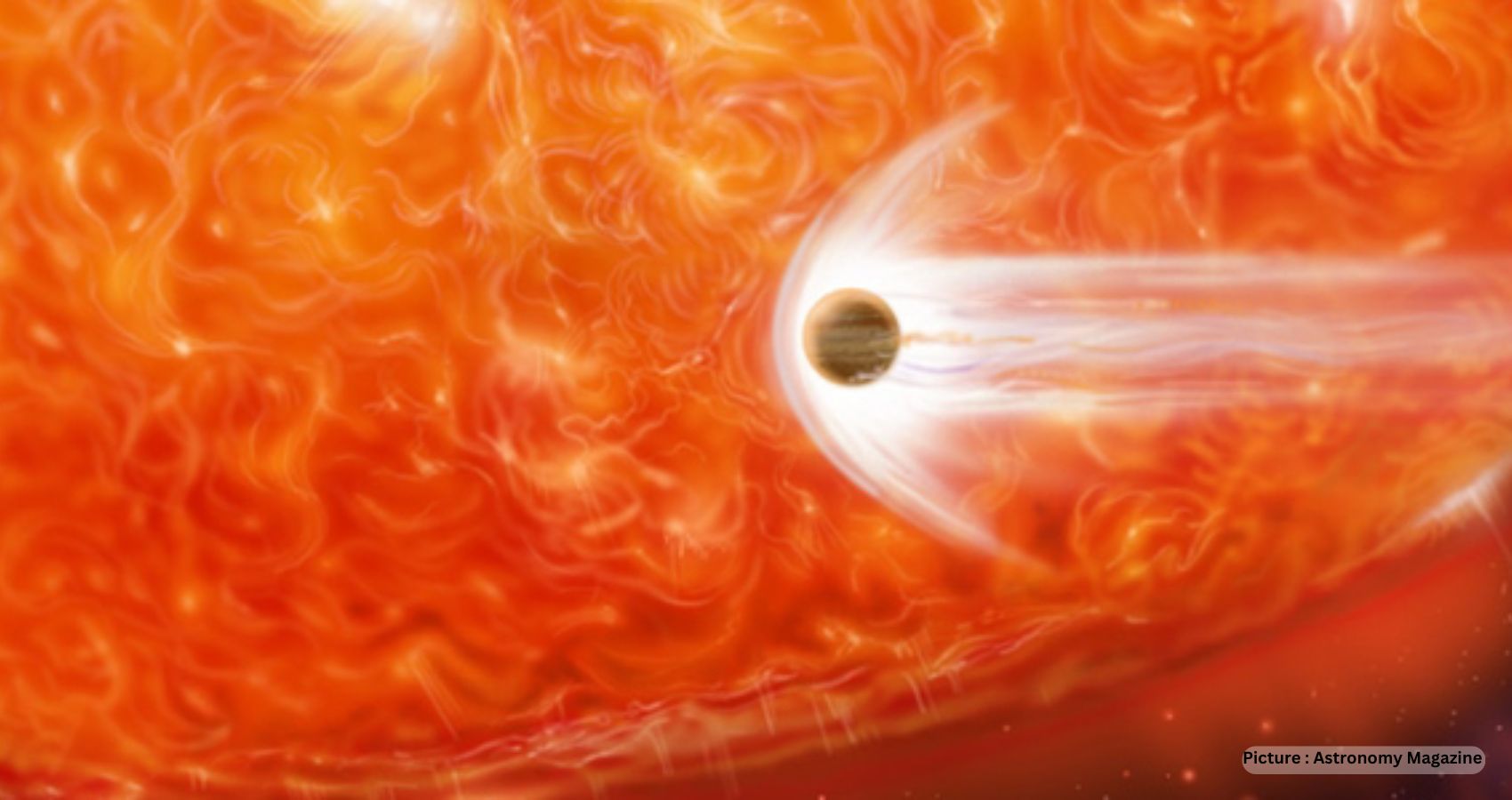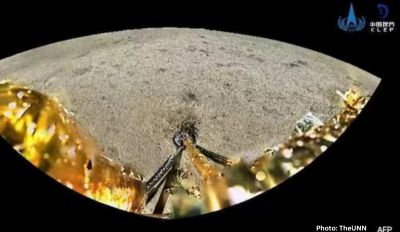A group of scientists from MIT, Harvard University, Caltech and other institutions have made an extraordinary observation of a planet being engulfed by a star. For the first time, researchers have witnessed a star swallowing a planet, which provides crucial insight into how Earth will meet its end. The event observed was a hot Jupiter-size world that spiralled towards a dying star, approximately 1,000 times larger, until it was eventually ingested. This caused the star to grow rapidly and become over 100 times brighter in just 10 days, before gradually fading from view. The novel observation bolsters researchers’ understanding of what Earth’s finale is likely to be. Many astronomers believe that Earth will be subject to a similar fate billions of years down the line when the sun consumes its closest planetary neighbours.
Kishalay De, the lead author of the study and a postdoctoral student at MIT, commented that “all that we see around us, all the stuff that we’ve built around us, this will all be burned in a flash when the Sun decides to evolve and become puffy in 5 billion years”. This means that Earth, along with all of humanity’s creations, will disappear when the sun becomes a red dwarf.
Despite this pessimistic prediction, the researchers involved in the study are thrilled by their groundbreaking observation. The event witnessed allows us to gain a better understanding of the nature of celestial bodies and cosmological phenomena, improving our knowledge of the universe we inhabit. By being able to witness and understand this event, scientists can further their knowledge of how galaxies form and develop over time.
“Wow! That is my first reaction,” Amanda Karakas, an astrophysicist at Monash University in Australia who was not involved in the study, said in an email. “It certainly provides clues as to what will happen to the planets in our solar system and the Earth, many years from now.”
A Star Engulfed a Planet: Discovery by Accident
A team of astrophysicists from the California Institute of Technology have discovered that a star in the Milky Way galaxy, 12,000 light years away in the Aquila constellation, recently consumed a Jupiter-sized planet. The team was initially analyzing data in search of eruptions of binary star systems, in which two stars orbit each other and one brightens as it pulls mass from the other.
However, they noticed that one star became far brighter over roughly a week. When the researchers investigated its chemical composition using observations from the Keck Observatory in Hawaii, they found it was surrounded by molecules that can only exist at cold temperatures. After taking infrared observations nearly a year later, the team discovered the star was still shining brightly in the infrared bands of light, even though it was no longer visible to the naked eye, which suggests the star was brightening as a result of merging with something else. This led the team to estimate the total amount of energy released by the star to be 1,000 times smaller than past observations of stars merging with one another, leading Dr. De, a Caltech investigator, to declare “what you have is the star that engulfed the planet.”
The team also suggested that planet engulfments are in fact quite common, though hard to spot, because they are usually much less pronounced than big flares that emanate from stars caused by other violent events such as binary mergers. The infrared data has illuminated these processes, previously obscured by brighter eruptions. Co-author Mansi Kasliwal stated that when “it’s just a planet merging into a star, it’s intrinsically very weak, so it’s harder to find them…When something is harder to find, all we need is a more powerful camera.”
This theory was then put to the test by other members of the team who modelled the observations and reconstructed what may be happening. The team hypothesised that the initial bright flash was the final moments of the planet getting eaten by the star, which led to a blast of the star’s outer layers. This then settled as cold dust over the following year, which accounts for the leftover dust also observed.
While it is challenging to detect these events, researchers are growing increasingly skilled at observing them with updated technology. As this continues to develop, scientists foresee the discovery of many more similar events on a much larger scale. For instance, Dr. Anna Ho, other Caltech astronomer, suggested that a recently discovered dimming star could have been caused by the merger of a smaller star or planet with a much larger one.
Dr. Emily Levesque, an astronomer at the University of Washington, echoed this sentiment, stating that this discovery is “interesting and exciting” for the field. She went on to say that the “idea of planets falling into their stars is not that new…. [Planet engulfment is] something that we do expect to happen, but we don’t know that much about the occurrences … [That is] why getting any observational handle on the candidates is really important for our theoretical understanding and modeling of what’s going on.” The sheer amount of observational data that astrophysicists have access to continues to grow, and this is paving the way for more discoveries of this kind in the years ahead.











